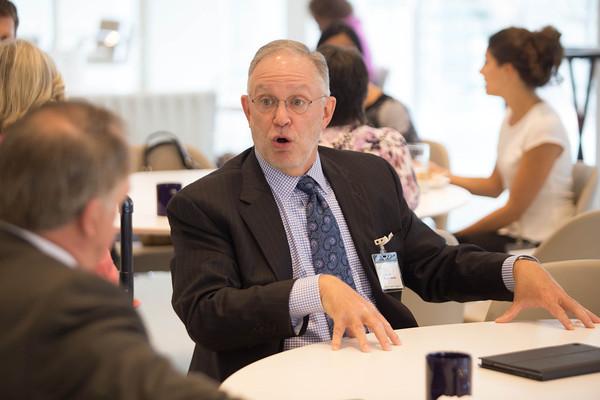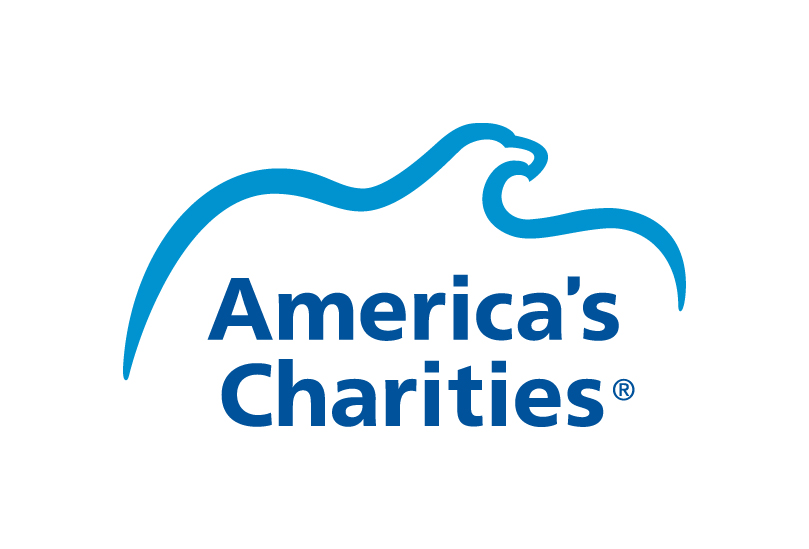The Future of Philanthropy and How Nonprofits and Companies are Responding
5 Questions with Steve Delfin from America's Charities

This blog post was originally featured in the Here's My Chance MCON Changemakers Interview series.
Steve Delfin is the CEO and President of America’s Charities, a strategic consulting partner for philanthropic organizations around the nation. Working across sectors, America’s Charities organizes and supports workplace giving campaigns to raise money for the over 180 charitable organizations that make up the federation.
Prior to stepping up as President, Steve was a long-time volunteer with America’s Charities. During that time, he worked as the Executive Director at the National Credit Union Foundation and the Director of Community Relations for Booz-Allen-Hamilton. Those are just two names on a long list of organizations at which Steve lead the pack towards corporate responsibility initiatives and philanthropic efforts.
To keep track of what Steve has to say about workplace giving, employee engagement, and ways to achieve maximum positive impact, cruise through his Huffington Post column. For a brief rundown, check out what we found out in just twenty minutes with him!
Where is philanthropy going? What have you gleaned from your time at America’s Charities on how we can get millennials to meaningfully engage in a long-term relationship with the causes they care about?It’s amazing how so many of the things that are positioned as new are really regeneration of things that happen generation after generation. Engaging young people in volunteerism as a way to get them involved in giving is not unique to the millennial generation. What’s different is how you do it.
The use of social media and digital technology has accelerated that process and is encouraging the younger generation to make financial contributions earlier than previous generations.This younger generation—millennials—is predisposed to service because they were exposed to it earlier.
My children were involved in what I used to call mandatory volunteerism. In order to graduate high school, you had to complete so many hours of community service. By the time they got to college, it was already ingrained in them that this was an expectation. For non-profits, the trick here is not thinking that the young generation is dramatically different in how they think. It’s recognizing they’re just a little different in how they act and get information and communicate.
The basic human instinct to want to get involved in peer groups, to want to volunteer to help, to be idealistic, has always been there. The technology we have now allows that to happen sooner, faster, quicker. It also has the potential to turn people off just as quickly if they haven’t had exposure.
No matter what generation you lived in, at the time, you felt whatever the innovation was that caused the world to go faster. I think the baby boomers are the first generation to have seen transformation accelerate to its current speed. From radio to TV, from black and white to color, from color to cable, from cable to satellite, from Apple computers and floppy discs to these things we’re all carrying around in our pockets. But is that really a whole lot different than my great grandmother who remembered slavery and was around to see the beginning of this whole digital culture? Think about the scope of her lifetime. She was alive when there were no cars and no electricity all the way to color TV at the end of her life.
How does that relate to how non-profits engage with this new generation of donors and volunteers?It means they have to be careful not to treat this generation vastly different than you would have treated the same age group at a different time. It’s all still about donor relationships. It’s a matter of how you leverage the tools that are available with the understanding that you can elicit change quicker and get things done faster, either good or bad.
And that’s the challenge. We’ve made a conscious effort to have more millennials on our board. The first millennial we recruited was a technology and social digital media consultant. How will you have an authentic voice in this discussion if you’re not listening to the people you’re discussing? This also means you have to meet the millennial generation where they are.
Millennials generally are not interested in organizations; they’re interested in cause and issues. If one of my friends is in the Susan G. Komen walk and they need a donation and I support them, I don’t view it as a Susan G. Komen donation, I view it as supporting my friend. So what that means to Susan G. Komen is that they have to treat me as a friend of the donor, not a direct donor. That has implications for how they communicate with me.
Non-profits have to look at this as experiential learning, taking risks without knowing what’s going to work. One takeaway from this conference is to take risks—don’t be afraid to try things to reach the audience. Organizations need to go to things like this to learn about the tools for communication and how this age group thinks. It’s dramatically different than how they’re used to working in their current marketing strategy.
Studies show that we make a decision in 1-3 seconds on a homepage about whether we think an organization is reputable and deserves our money. How have you found that charities respond to that?One of our member charities is an organization called Nurse-Family partnership. They are cited by every social innovation group as being one of the most effective charities in the country. They’ve got venture capital coming to them, they’re on Ted Talks, they’ve been in a venture philanthropy summit in Washington, and they’ve been in the New York Times. But they can’t raise money.
There are a number of reasons for this. First, by looking at their homepage, it’s totally unclear what they do. They’re so caught up in the intricacies of how they do it, and the fact that they are able to demonstrate results, but they haven’t been able to translate that into a communications strategy to reach a receptive audience.
Part of this is lack of money. They don’t get reimbursed for marketing on their government grants. They don’t seek money to do it. And they put no money and investment in developing a long-term organizational capacity to understand and have contemporary knowledge about what that young market is looking for. Many charities are unable or unwilling to do it.
Places like the Philadelphia Foundation are starting to bring website redevelopment under their capacity granting. Before, you could always get $25000 to do a strategic plan but its pulling teeth to get $10,000 invested in a wordpress website just to update it. Why do you think that is?I think the technology of the site is important. You have to have an intersection of a brand with a respectable, functioning web browser. I think where the rubber hits the road is in the reshaping of content for the new channels. We’re experiencing that right now in the workplace giving campaigns where more and more of them are using technology to drive their campaigns.
What the companies don’t have is the content that drives the interest in giving. They’ve got these campaigns with a list of charities, but it doesn’t have the stories.
We just brought into our board the founder of Great Non-Profits. Part of our job is helping our charities understand how to leverage these new tools. How do you leverage Great Non-Profits just like a restaurant leverages Yelp? You can have people post. You can get engaged and have that discussion. Even if you don’t want to, you need to read what others are saying about you because it’s instant focus grouping.
But that then leads to the talent gap at the non-profit charity level. The charities that are investing in talent, which tend to be the small startups and the big brands—the ones in the middle who are really struggling to find the money to invest in talent.
Why is it so tough to get organizations in the middle on board?The big thing with large organizations like zoos and hospitals and museums is that most of them have a significant fee for service capacity that requires them to have already hired people who understand retail marketing using the internet. They have some degree of technical and outside expertise relevant to what they perceive to be the moneymaking side of their organizations opposed to the fundraising side that often gets underfunded and uses totally different platforms and different groups of people working on it.
The groups who have co-mingled that have been highly successful. Groups like AARP and National Geographic have services within their functions. They have cross-functionality between the lines of their functions and that’s the difference shown by the big organizations with big resources.
These small organizations have somebody’s brother who created their website and they link it to network for good as their going site and they think that they’ve hit the Taj Mahal of social media and millennials.
_________________________________________________________________________________
Learn more about Steve Delfin by following his blog and connect with him on LinkedIn or Twitter.
To see how America's Charities can help you with philanthropy, or if you would like to have Steve Delfin speak at an event, click here to contact us.

